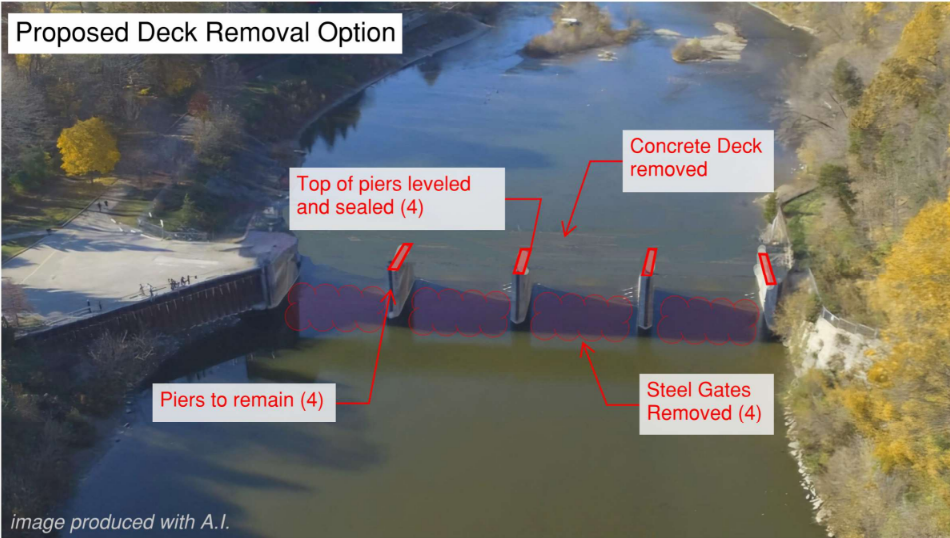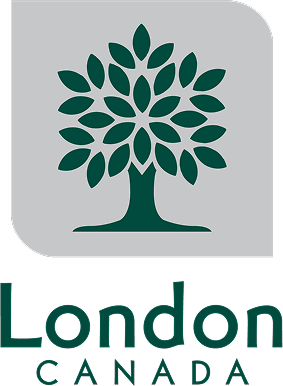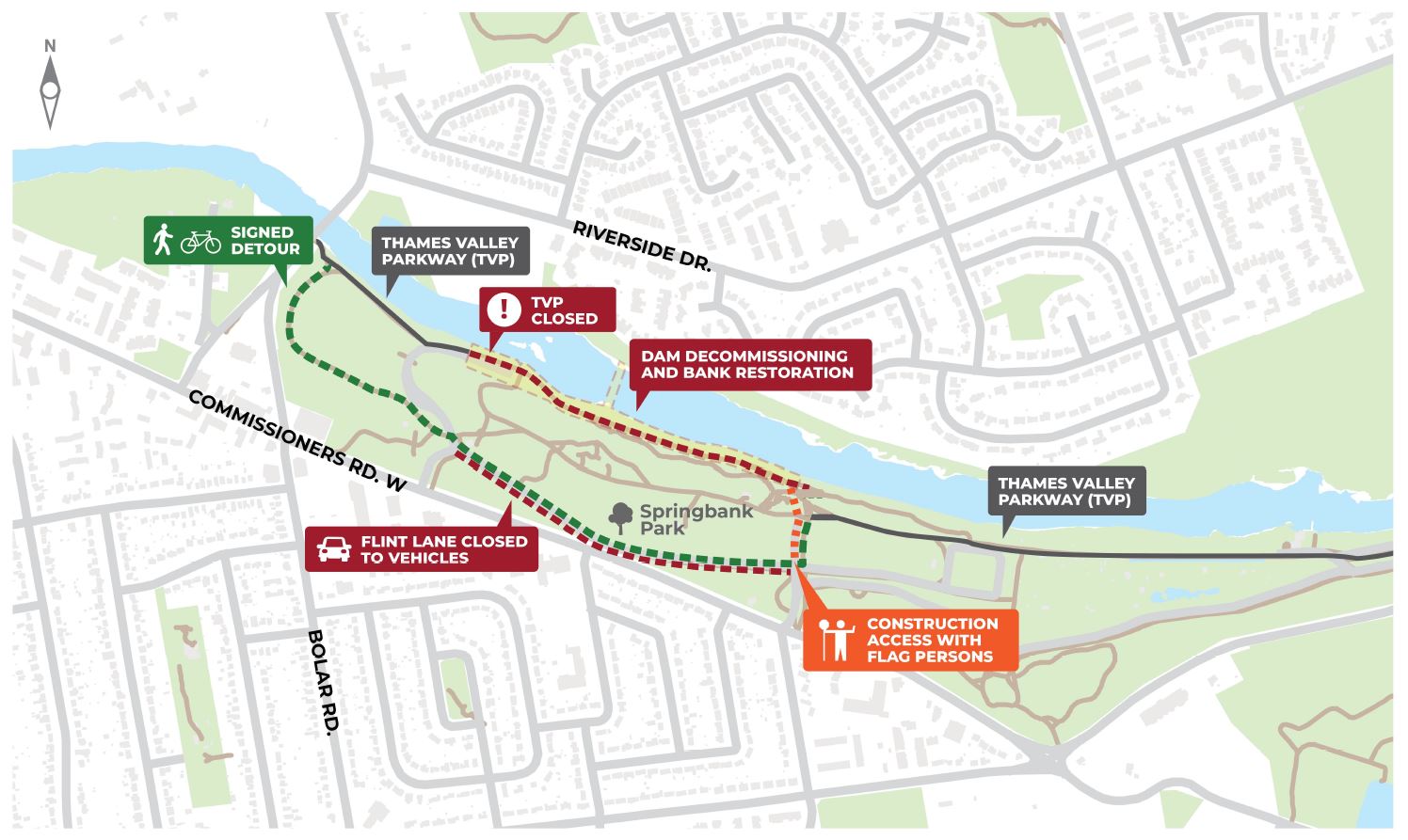About this project
The Springbank Dam decommissioning project is scheduled for construction in summer 2024. The design of the project is based on the preferred option of “Partial Removal” recommended by th One River Master Plan Environmental Assessment completed in 2019.
May 2025 UPDATE: During the 2024 construction project, the contractor and structural engineer were able to access the underside of the Dam superstructure during construction and found the concrete of the deck was in worse condition that initially anticipated. It was determined that the best course of action is to remove the concrete deck as part of the existing project, as there will be significant savings to the City to include this work rather than address this as a standalone project. For more details, see the report that went to Council on May 13, 2025.

December 2024 UPDATE: Due to high river levels and spring fish passage requirements, the gate removals have stopped for the year and will recommence in July 2025. Final restoration works within Springbank Park are now planned for Summer 2025, with completion expected by October 2025. Detours through Springbank Park will be re-established for pathway users and identified through signage in the park.
Partial removal means:
- The concrete superstructure of the dam will stay in place, while the mechanical components, control building, and the steel gates that currently sit on the bed of the river will be removed;
- Improvements will be made to address the superstructure’s stability, including ongoing preventative maintenance, and a safety inspection program; and,
- Downstream of the dam, along the south shore of the Thames River, approximately 175m of concrete bank will be removed and restored with a naturalized shoreline with plantings and habitat improvements.
Site preparations for the decommissioning of Springbank Dam will begin in Spring 2024, including tree removals. Active construction is anticipated to occur between late-July and December 2024. Final restoration works within Springbank Park are planned for Spring 2025. Detours through Springbank Park will be established for pathway users and identified through signage in the park.
Above: This map shows the Springbank Dam construction area and signed Thames Valley Parkway detour that will be in place.
Thames River Projects 2024 – Project Update Meeting
The City of London hosted a drop in project meeting to share the detailed designs of the Springbank Dam partial removal project as well as improvements being made to Harris Park. These projects are both implementations of the One River Master Plan Environmental Assessment, completed in 2019. The meeting was held on January 31, 2024 inside Fleetway Bowling Centre (The Spare Room) between 6:00 p.m. and 8:30 p.m.






